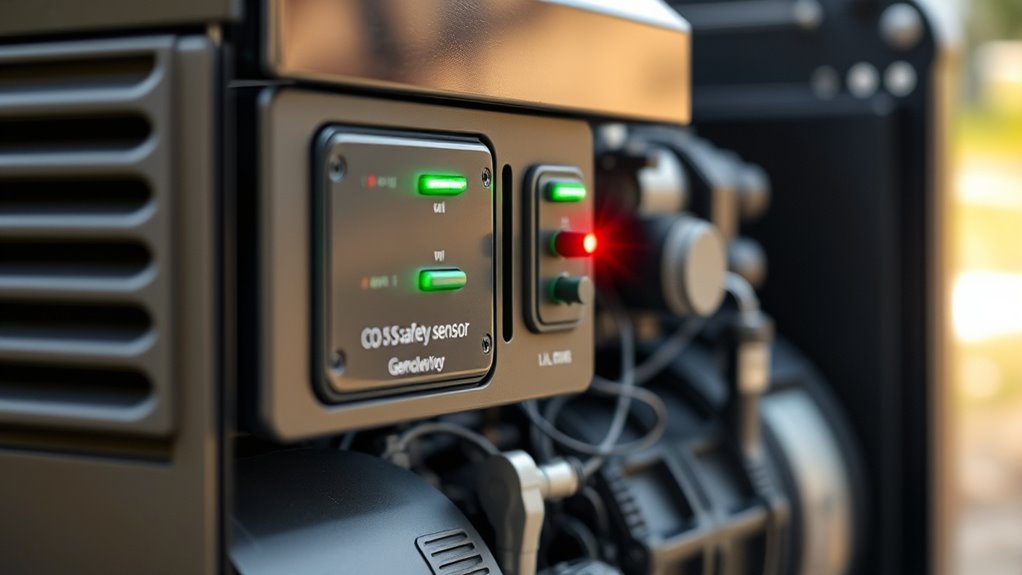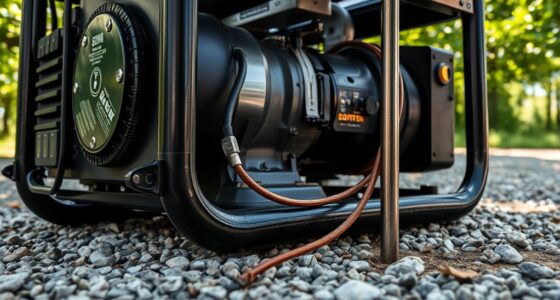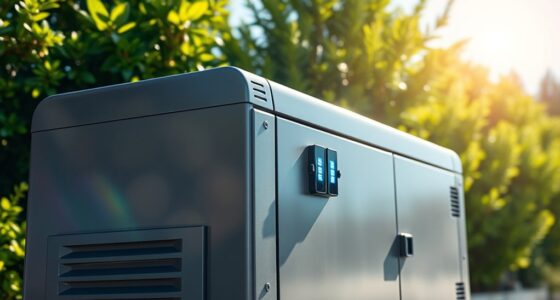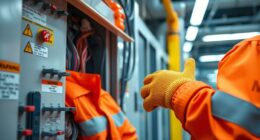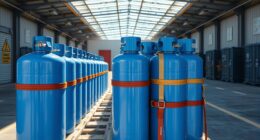To guarantee safety with your generator, installing a reliable carbon monoxide (CO) sensor is vital. These sensors detect dangerous CO buildup and trigger alarms early, helping you prevent silent poisoning. Choose a sensor type suitable for your generator, install it correctly, and maintain it regularly. Proper ventilation and adherence to safety standards are essential. If you want to learn more about selecting, installing, and maintaining CO sensors, keep exploring this detailed guide.
Key Takeaways
- CO safety sensors detect dangerous carbon monoxide levels and activate alarms, preventing poisoning during generator use.
- Proper sensor placement, regular testing, and maintenance are essential for reliable CO detection.
- Different sensor types (electrochemical, semiconductor, infrared) offer varying accuracy and compatibility options.
- Immediate ventilation and evacuation are crucial responses when a CO alarm sounds.
- Professional installation and adherence to safety standards enhance sensor effectiveness and generator safety.
Understanding Carbon Monoxide and Its Risks
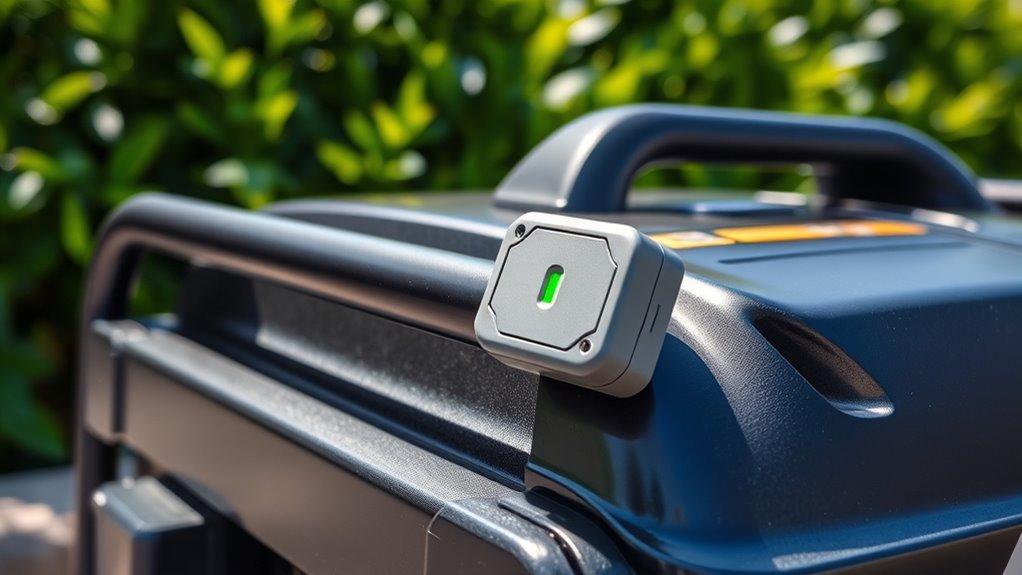
Have you ever wondered why carbon monoxide is so dangerous around generators? It’s because this colorless, odorless gas can rapidly poison indoor air without warning. When you run a generator indoors or in poorly ventilated areas, CO builds up silently, making ventilation safety critical. Carbon monoxide binds to your blood, preventing oxygen from reaching essential organs, which can lead to unconsciousness or death in minutes. Even small amounts can cause symptoms like headaches, dizziness, and nausea. That’s why understanding the risks of CO is necessary for safety. Proper ventilation prevents dangerous concentrations from accumulating. Never run a generator inside a home, garage, or enclosed space without adequate airflow. Always ensure good ventilation and use CO safety sensors to monitor levels and protect yourself and others. Additionally, integrating advanced on-device AI capabilities in safety sensors can improve real-time detection and alert systems, significantly enhancing generator safety measures.
How CO Safety Sensors Detect Dangerous Levels
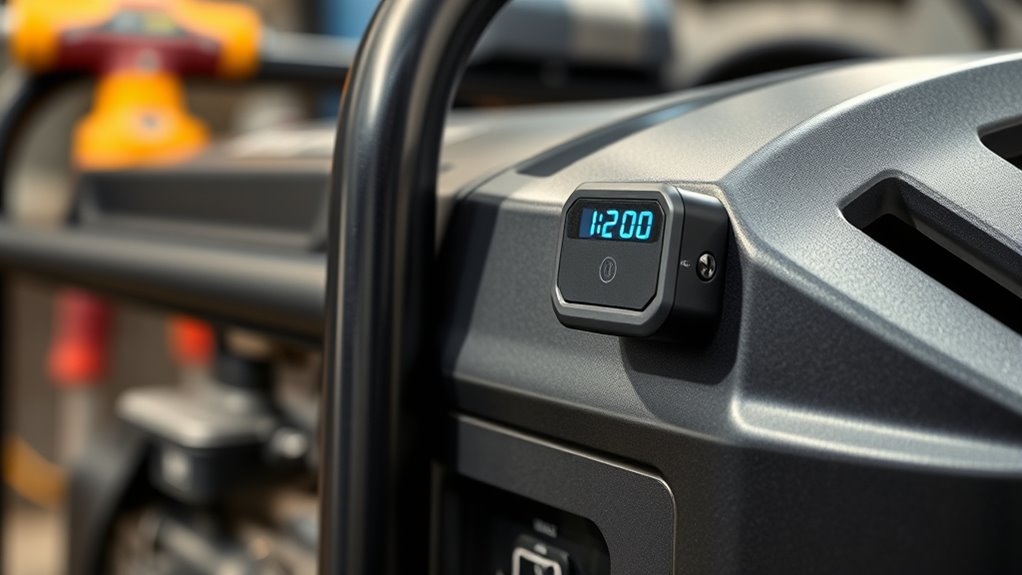
CO safety sensors are designed to detect dangerous levels of carbon monoxide in the air quickly and accurately. They achieve this through sensor calibration, which guarantees the device responds precisely to CO concentrations. Proper calibration involves regular testing and adjustments to maintain accuracy over time. When CO levels reach unsafe thresholds, the sensor triggers an alarm, alerting you to evacuate or take action. Alarm placement is vital; sensors should be installed at breathing height and away from sources of interference, like vents or open windows, to guarantee reliable detection. The sensor continuously monitors the air, and once it detects CO buildup beyond safe limits, it activates the alarm promptly, giving you enough time to respond before danger escalates. Additionally, understanding how automation technologies are advancing in safety systems can help improve your overall home security.
Types of CO Safety Sensors for Generators
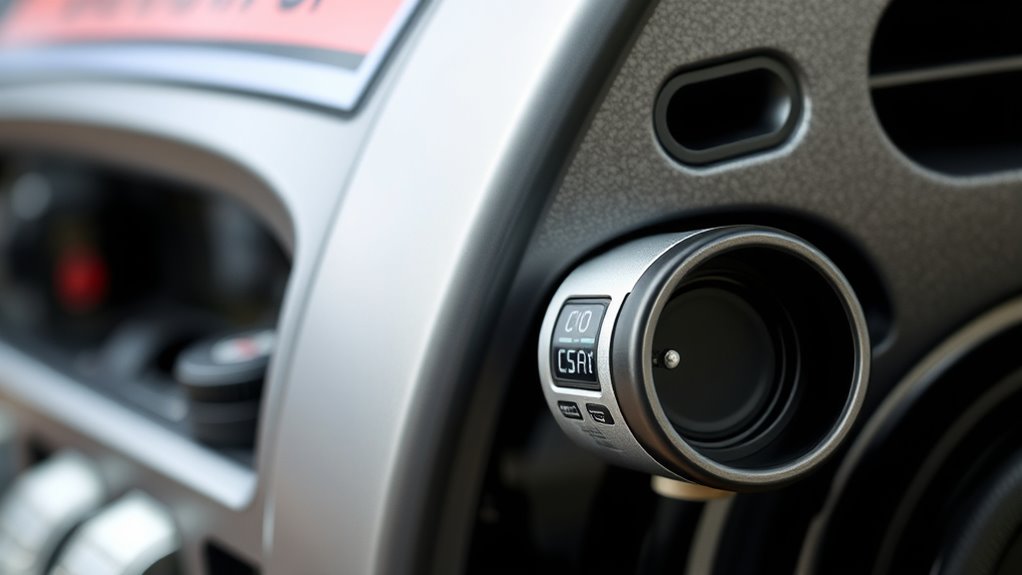
When choosing a CO safety sensor for your generator, you’ll want to consider the different sensor technologies available and how they detect dangerous levels of carbon monoxide. Compatibility with your generator model and proper installation are also vital to guarantee reliable safety. Understanding these factors helps you select the right sensor to keep your environment safe. Additionally, considering self-awareness can enhance your ability to assess your specific safety needs and preferences effectively.
Sensor Technologies Used
What types of safety sensors are commonly used to detect carbon monoxide (CO) in generators? You’ll find electrochemical, semiconductor, and infrared sensors most often. Electrochemical sensors are highly accurate and ideal for continuous monitoring, but they require regular calibration procedures. Semiconductor sensors detect CO through changes in electrical resistance, making them cost-effective but less precise. Infrared sensors use light absorption to identify CO levels and are suitable for high-precision applications. Proper sensor placement is vital to avoid false alarms and ensure accurate detection. Here’s a quick overview:
| Sensor Type | Pros | Cons |
|---|---|---|
| Electrochemical | Accurate, reliable | Needs calibration |
| Semiconductor | Affordable, simple | Less precise |
| Infrared | High precision, durable | Higher cost |
| Placement | Essential for accuracy | Affects sensor lifespan |
Ensuring proper maintenance procedures can extend sensor lifespan and maintain safety standards.
Compatibility and Installation
Choosing the right safety sensor for your generator’s carbon monoxide detection is crucial to guarantee reliable protection. First, verify the sensor is compatible with your generator’s fuel type, whether gasoline, propane, or diesel, to prevent malfunction. Compatibility affects sensor accuracy and lifespan. Proper sensor placement is equally important; install it where it can effectively detect rising CO levels without interference from exhaust pipes or vents. Typically, sensors should be positioned near the engine or in the exhaust area, but avoid placing them too close to the source to prevent false alarms. Follow the manufacturer’s instructions carefully during installation, and consider professional help if needed. Correct compatibility and placement ensure your CO safety sensor functions at its best, providing peace of mind during generator operation. Additionally, understanding generator tuning can help optimize overall performance and safety.
Features to Look for in a CO Safety Sensor
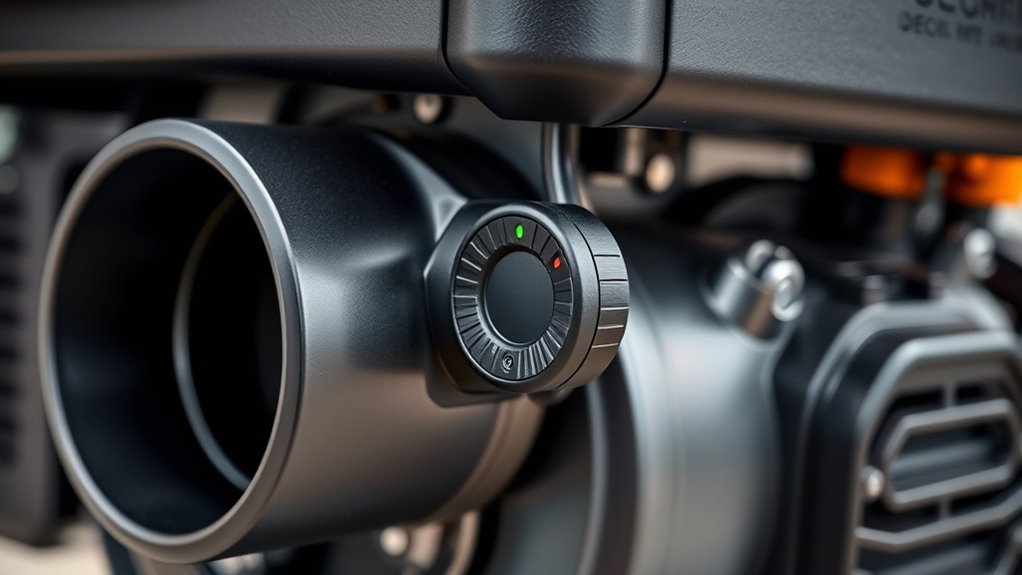
When choosing a CO safety sensor, you should consider its alarm sensitivity levels to guarantee it responds quickly to dangerous levels of carbon monoxide. It’s also important to check if the sensor’s power source is compatible with your generator setup for reliable operation. Additionally, selecting a sensor with immersive soundscapes can enhance alert effectiveness and ensure timely responses. These features help you stay protected and keep your generator running safely.
Alarm Sensitivity Levels
Understanding the alarm sensitivity levels of CO safety sensors is essential for guaranteeing reliable protection. Look for sensors with adjustable alarm calibration, so you can set the response threshold appropriate for your environment. A sensor with a quick and accurate sensor response will detect even small CO increases promptly, minimizing risk. Higher sensitivity doesn’t mean false alarms; it ensures early warning before dangerous levels develop. Check if the sensor’s response time is fast enough to alert you in time to take action. Some sensors allow you to customize sensitivity levels, giving you better control over detection accuracy. Remember, a well-calibrated alarm minimizes false positives while providing reliable detection of CO buildup, essential for your safety when operating generators. Additionally, understanding the contrast ratio of your sensors can impact how clearly alerts are communicated visually, ensuring you notice warnings promptly.
Power Source Compatibility
Selecting a CO safety sensor that is compatible with your generator’s power source guarantees reliable operation and continuous protection. For fuel-powered generators, confirm the sensor can handle the voltage and current requirements without affecting performance or fuel efficiency. If your generator is electric, look for sensors designed for low-voltage connections to prevent false alarms or malfunctions. Compatibility also impacts noise levels; an ill-suited sensor may cause unnecessary noise, decreasing overall comfort. Proper compatibility ensures the sensor operates smoothly, conserving energy and maintaining ideal fuel efficiency. It also helps avoid potential damage or false readings caused by incompatible components. Confirming compatibility before purchase ensures the sensor functions correctly, providing dependable CO detection without compromising your generator’s efficiency or adding unwanted noise. Additionally, understanding Fokos can help you choose quality sensors that meet safety standards and ensure long-term reliability.
Installing and Maintaining Your CO Safety Sensor
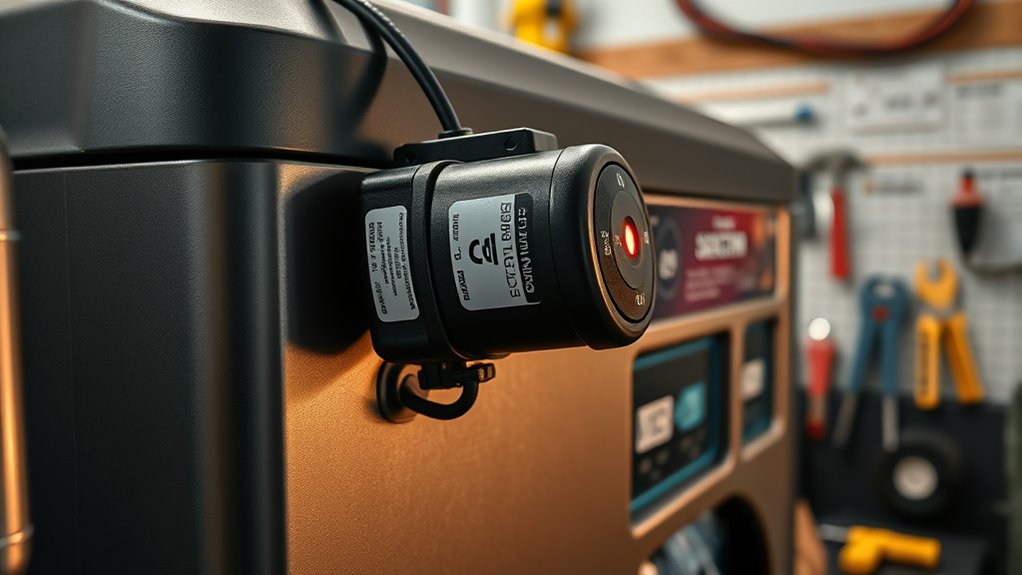
Proper installation and regular maintenance are essential to guarantee your CO safety sensor functions correctly and keeps you safe. To ensure peak performance, follow these installation tips and establish maintenance routines. Start by choosing a location away from vents and direct airflow. Secure the sensor at recommended heights, usually near the ceiling or high on a wall. Test the sensor regularly to confirm it responds to CO presence. Keep the sensor clean by gently dusting it and checking for obstructions. Replace batteries as needed and follow manufacturer guidelines for sensor lifespan. Always review the user manual for specific instructions. Consistent attention to installation and maintenance routines helps prevent false alarms and guarantees your safety system works when you need it most. Incorporating professional services can further ensure your installation and ongoing maintenance meet safety standards and optimize sensor performance.
What to Do When a CO Alarm Is Triggered
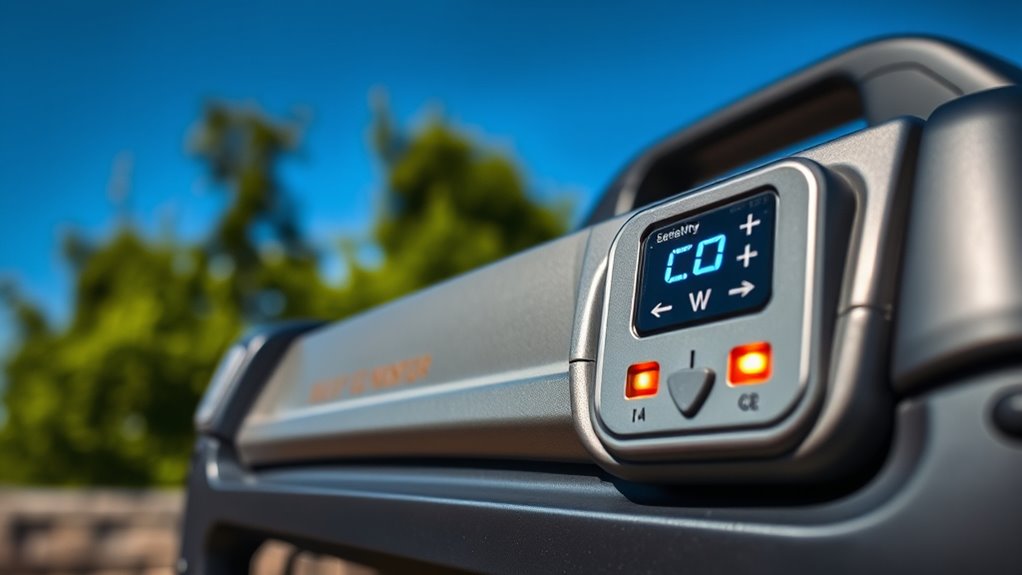
When a CO alarm sounds, your first priority is to act quickly and calmly. Begin by immediately ventilating the area—open windows and doors to disperse the carbon monoxide. Turn off the generator and any other potential sources of CO if safe to do so. Perform CO alarm troubleshooting by checking the sensor’s placement and ensuring it’s functioning properly. Next, follow the emergency response steps: evacuate everyone from the area and move to fresh air outside. Call emergency services if anyone shows symptoms of CO poisoning, such as dizziness or nausea. Do not ignore the alarm or attempt to disable it without addressing the source. Regularly testing your CO safety sensors can help ensure they are functioning correctly and provide early warning. Once authorities confirm the environment is safe, you can evaluate whether it’s safe to restart the generator or need repairs.
Legal Requirements and Safety Standards for CO Sensors
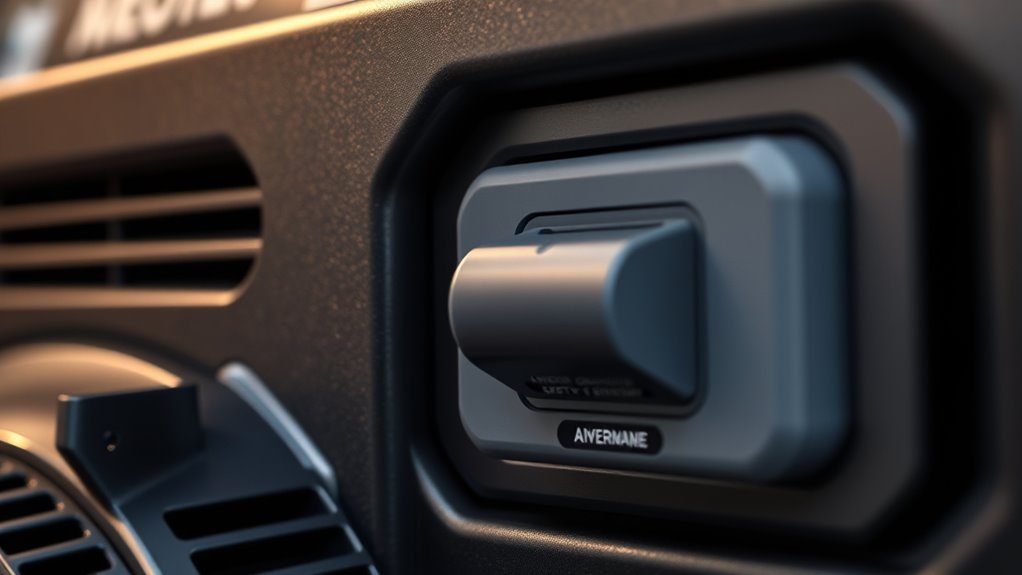
Understanding the legal requirements and safety standards for CO sensors is essential to guarantee your generator setup complies with regulations and keeps you safe. Regulatory compliance ensures that your CO sensors meet local laws, which vary by region. Safety certification confirms that the sensors have been tested and approved for reliable performance. To stay compliant, you should be aware of specific standards, such as UL or CSA certifications. These standards guarantee that the sensors can accurately detect CO levels and trigger alarms promptly. Failing to meet legal requirements can lead to fines or unsafe conditions. Always verify that your CO sensors have proper safety certification and follow the regulations relevant to your location to ensure maximum protection.
- Certification requirements (UL, CSA, etc.)
- Installation standards for safety
- Maintenance and inspection regulations
- Local code compliance
- Manufacturer’s compliance documentation
Tips for Safe Generator Usage With CO Safety Devices
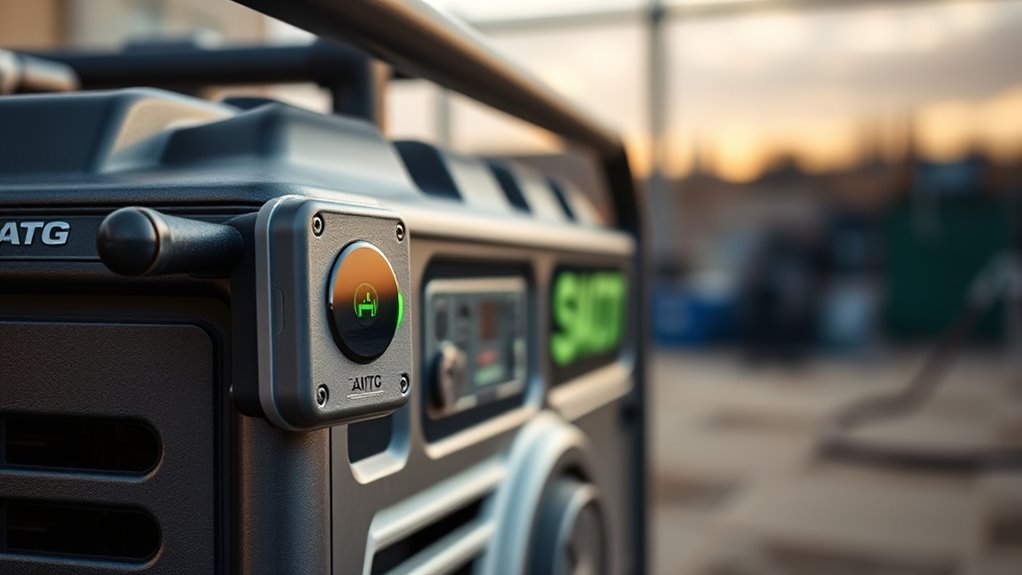
Using CO safety devices correctly is essential for preventing carbon monoxide poisoning during generator operation. Always place your generator outdoors in a well-ventilated area, away from windows and vents. Regularly check and maintain CO sensors to make sure they’re functioning properly. Keep noise levels in mind—excessive generator noise can indicate issues that affect safety and fuel efficiency. To optimize fuel efficiency, avoid running the generator at full load unnecessarily, which also reduces noise and prolongs your device’s lifespan. Ensure the sensor alarms are loud enough to be heard from different parts of your home or workspace. By following these tips, you can operate your generator safely while minimizing noise disturbances and maximizing fuel efficiency. Proper use of CO safety devices keeps everyone protected and your generator running smoothly.
Frequently Asked Questions
How Often Should CO Sensors Be Tested for Accuracy?
You should test your CO sensors for accuracy at least once every three to six months, depending on the manufacturer’s recommendations. Regular testing guarantees sensor calibration remains effective and reliable. If you notice any false alarms or if the sensor isn’t responding properly, test it immediately and consider recalibrating or replacing it. Maintaining a consistent testing frequency helps keep your safety system dependable and alerts you to potential carbon monoxide issues promptly.
Can CO Sensors Detect Other Harmful Gases Besides Carbon Monoxide?
Think of your CO sensor as a vigilant guard dog—loyal but limited. It’s designed primarily for carbon monoxide, so it doesn’t detect other harmful gases like propane or methane. Gas detection sensors have their limitations, and relying solely on a CO sensor leaves gaps in safety. To guarantee thorough protection, consider installing multi-gas detectors that can identify a range of dangerous gases, guarding you against unseen threats.
Are There Wireless or Smart CO Sensors COmpatible With Home Automation?
Yes, many wireless or smart CO sensors are compatible with home automation. They offer wireless integration and smart home compatibility, allowing you to monitor CO levels remotely via smartphone apps or voice assistants. These sensors often connect through Wi-Fi or Zigbee/Z-Wave protocols, making it easy to integrate with your existing smart home system. With these features, you get real-time alerts and seamless control, enhancing your safety and convenience.
What Is the Typical Lifespan of a CO Safety Sensor?
You should expect your CO safety sensor to last about 5 to 7 years, but this varies with usage and environment. Regular sensor calibration is essential to guarantee accuracy, and you’ll need to replace the sensor once it reaches the end of its lifespan or if it fails calibration tests. Keep an eye on manufacturer recommendations to maintain safety, and don’t delay sensor replacement when necessary.
How Do Environmental Factors Affect CO Sensor Performance?
Environmental factors like humidity interference and temperature sensitivity can considerably affect your CO sensor’s performance. High humidity may cause false alarms or sensor malfunctions, while extreme temperatures can reduce accuracy or damage the device. To guarantee reliable operation, keep your sensor in a dry, stable environment, and regularly check its calibration. Proper placement away from direct sunlight or moisture helps maintain accurate CO detection and safety.
Conclusion
Think of your CO safety sensor as the vigilant lighthouse guiding your boat through dark, treacherous waters. It warns you of hidden dangers before they become disasters, keeping you and your loved ones safe. Just like a lighthouse, it’s a small but mighty protector—so trust it, maintain it, and never ignore its signals. With your sensor as your guide, you can navigate generator use safely, keeping hazards at bay and your journey smooth.
